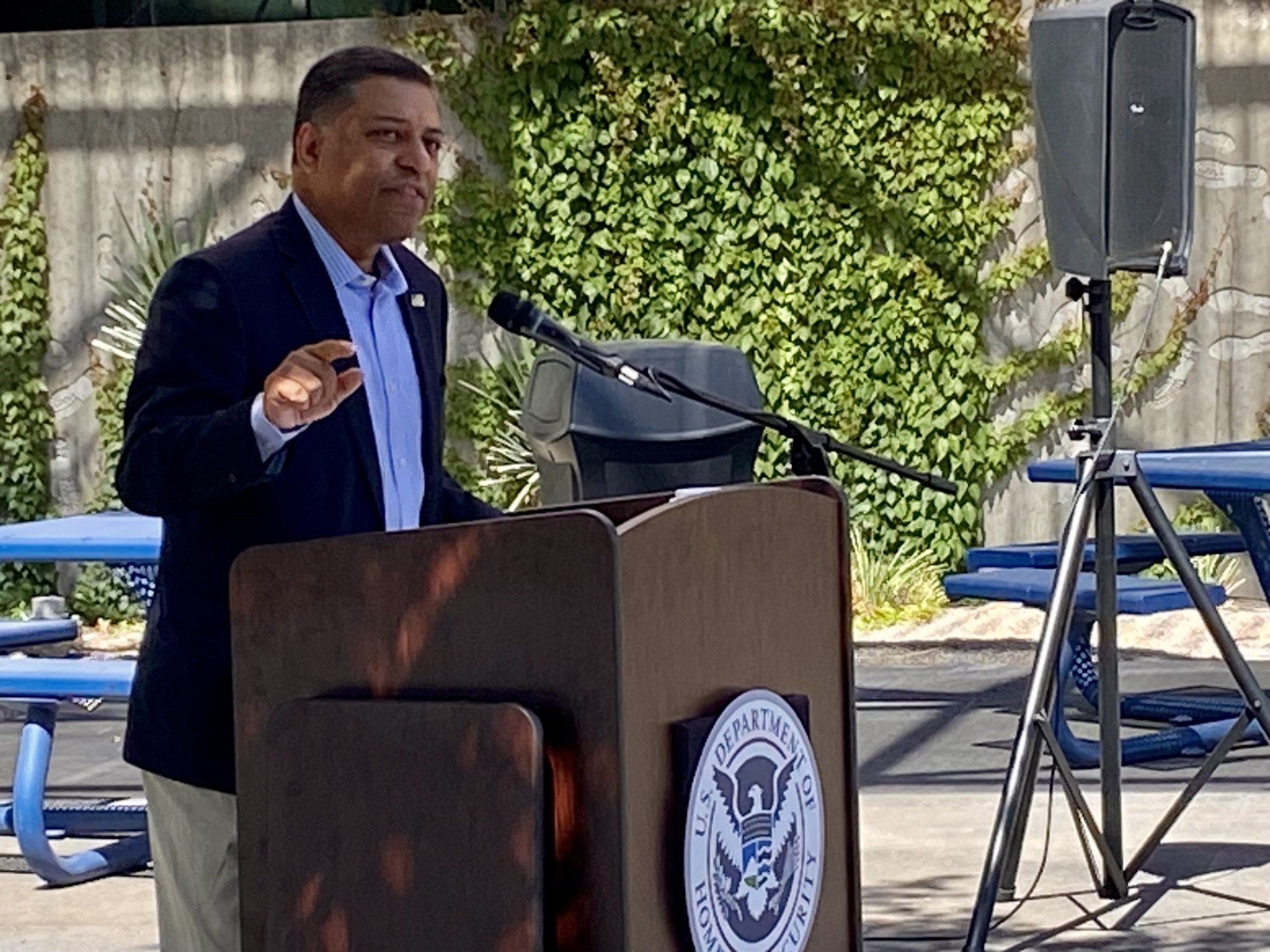 A customs officer removes packages of drugs hidden inside the rear door of an SUV at the Mariposa Port of Entry in Nogales. May 2019.
A customs officer removes packages of drugs hidden inside the rear door of an SUV at the Mariposa Port of Entry in Nogales. May 2019.
A White House official visited the U.S.-Mexico border in Arizona Thursday morning to talk about new technology and increased efforts at stopping illegal fentanyl from entering the country.
National Drug Control Policy Director Rahul Gupta says the Biden administration is expanding inspection technology on the border and has invested significant funding for law enforcement efforts to address fentanyl trafficking. Just this fiscal year, more than 10,000 pounds of fentanyl was seized at Arizona’s southern border.
“Just last year, we had 109,000 overdose deaths in this country, and clearly Arizona is not excluded,” he said. “There were 2,700 deaths in Arizona. As you know, that translates overall in the country to an American dying every five minutes around the clock. These are folks that are our brothers and sisters. As a physician I can tell you these are neighbors and teachers.”
 VIEW LARGER National Drug Control Policy Director Rahul Gupta visited the U.S.-Mexico border in Arizona, on June 29, 2023, to talk about new technology and increased efforts at stopping illegal fentanyl from entering the country.
VIEW LARGER National Drug Control Policy Director Rahul Gupta visited the U.S.-Mexico border in Arizona, on June 29, 2023, to talk about new technology and increased efforts at stopping illegal fentanyl from entering the country. More than half-a-billion-dollars for border technology is in President Joe Biden’s 2024 budget proposal, with a primary focus on fentanyl detection at ports of entry. The administration’s goal is to have more than 100 new large-scale scanners at ports along the border by 2026.
“That’s the goal, is to make seizures and interdictions in such a way that it is no longer profitable for the bad guys to do it,” he said.
The efforts also include disrupting financial networks, including cartel accountants, brokers, real estate agents and lawyers. And another part of the strategy includes soon making the opioid overdose reversal medication Narcan available over the counter and increasing the number of doctors who can prescribe treatment, Gupta said.
“Helping people with addiction and going after traffickers are two sides of the same coin,” he said. “You can’t have one versus the other. You’ve got to help people. There’s 46 million Americans today with addiction. … While not letting the foot off the gas, to go after financial structures and systems and choke points to commercially disrupt these operations.”

By submitting your comments, you hereby give AZPM the right to post your comments and potentially use them in any other form of media operated by this institution.